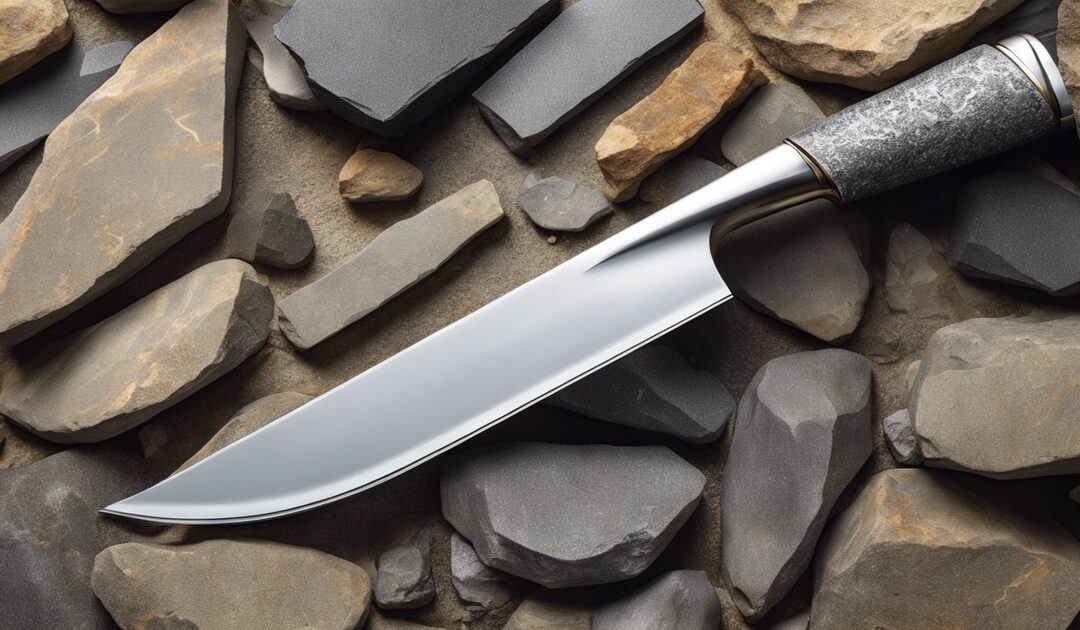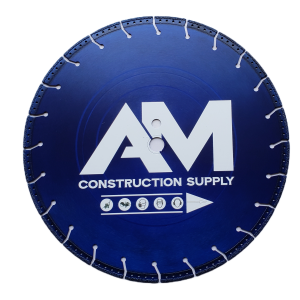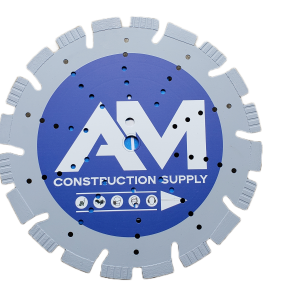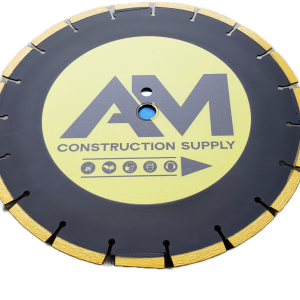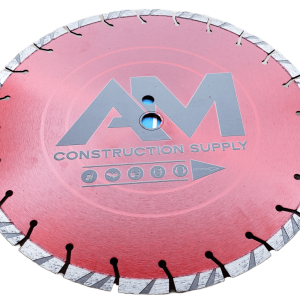Over 75% of DIY enthusiasts and professionals agree that choosing the best blade for cutting stone and concrete, focusing on the right bonds, directly impacts the quality and efficiency of their work. Yet, navigating through the plethora of options available can be as daunting as slicing through granite with a blunt tool. This post is your go-to guide for selecting the top-tier blade that promises precision, durability, and safety without breaking the bank. Whether you’re sculpting a masterpiece or laying down a new pathway, understanding the key features that distinguish superior blades from mediocre ones can transform your stone-cutting experience. Let’s dive into what makes a blade stand out in the vast sea of cutting tools.
Key Takeaways
- When cutting stone, the choice of blade significantly impacts the quality and efficiency of the cut; diamond blades are universally recognized for their effectiveness.
- Understanding the basics of blade types and their specific applications is crucial for achieving desired results in stone cutting projects.
- Opting for quality diamond blades offers numerous benefits, including longer lifespan, better precision, and cost-effectiveness over time.
- Real-world applications and customer success stories highlight the importance of selecting the right blade for different stone materials and projects.
- Making an informed choice involves considering factors such as the type of stone, the size of the project, and the desired finish, ensuring optimal performance and satisfaction.
- To ensure the best outcomes in stone cutting, prioritize blades that are tailored to your specific needs, backed by positive reviews and proven success in similar applications.
Understanding Stone Cutting
Stone Types
Different stones demand specific blades for cutting. Granite, marble, and igneous rocks are common types. Each has unique hardness and texture. These differences greatly affect blade choice.
For granite, a very hard stone, a strong blade is necessary. Marble, softer and more delicate, requires a less aggressive blade to prevent chipping. Igneous rocks vary in hardness but generally need robust blades. Selecting the right blade ensures clean cuts and prevents damage.
Cutting Techniques
Cutting stone isn’t just about slicing through the material. It involves various techniques like straight cuts, angles, and curves. These methods depend on project needs.
Precision plays a key role in achieving desired shapes and designs. A straight cut might seem simple but demands steady hands and accurate measurements. Angles and curves require more skill, allowing for intricate designs in stonework. Using the correct technique minimizes waste and boosts efficiency.
Blade Requirements
For cutting hard stone materials, diamond-tipped or diamond-bladed circular saws are essential. These blades can handle tough materials without dulling quickly.
A blade must match both the saw and the material for optimal performance. This compatibility ensures that the job is done efficiently and safely. The requirements for a good stone-cutting blade include durability, sharpness, and suitable size for the saw used.
Blade Basics
Material Composition
The composition of a blade plays a crucial role in its cutting capabilities. Diamond-tipped teeth stand out for their ability to slice through even the toughest stone materials with ease. They maintain sharpness far longer than other materials, making them a top choice for professional and heavy-duty applications.
Blades crafted from high-grade steel or carbide may also perform well, but none match the durability and cutting precision of diamond-edged blades. The material composition directly influences how quickly and cleanly the blade can cut, impacting both project efficiency and final results.
Design Features
The design of a blade significantly affects its performance in stone cutting projects. Segmented edges are known for their aggressive cutting ability and are ideal for quick, rough cuts. On the other hand, continuous rims offer smoother finishes, perfect for more delicate or precise work.
Adjustable blades provide versatility, allowing users to modify the blade’s exposure according to the specific requirements of each task. This adaptability ensures that precision cuts are achievable across various projects. Innovations in blade design also aim at minimizing dust and noise pollution during operation, enhancing the user experience and safety on-site.
Size Variations
The size of a blade dictates both the depth it can reach and the precision of its cuts. Larger blades enable deeper cuts in one pass but might sacrifice some accuracy due to their size. Smaller blades, conversely, offer greater control and precision but may require multiple passes to achieve desired depths.
A wide range of sizes is available to fit different saws and project needs. Choosing the correct blade size is pivotal for efficient and safe operation. It ensures that the tool matches the task at hand without overburdening the saw or risking inaccurate cuts.
Why Diamond Blades
Durability
Durability stands as a key feature in the selection of blades for cutting stone. The material composition of diamond blades, incorporating high-quality diamonds and a sturdy metal matrix, plays a pivotal role. This composition ensures that the blades can withstand intense conditions without quick wear.
Another factor enhancing their longevity is the design. Advanced engineering techniques ensure an even distribution of diamond particles. This uniformity prevents premature dulling and blade failure. Proper maintenance and usage further extend the life of these blades, making them a cost-effective choice. Users can avoid frequent replacements by following simple care instructions and using the blade as intended.
Precision Cutting
Precision in stone cutting is non-negotiable, especially for intricate designs and tight specifications. The quality and design of diamond blades are critical in this regard. They are engineered to produce clean, sharp cuts with minimal effort. The precision they offer ensures that project specifications are met with accuracy.
Tools and techniques also play a significant role in enhancing cutting precision. For instance, wet cutting techniques reduce dust and cool the blade, allowing for smoother cuts. Using the right blade for the material also makes a difference; harder stones require blades with a softer bond to allow new diamonds to be exposed as needed.
Efficiency
Choosing the right blade directly impacts cutting efficiency. Diamond blades cut through stone faster than other types due to their hard-wearing diamonds and optimized design. This speed reduces both effort and time required for projects.
Efficiency also affects project timelines and labor costs significantly. Faster cutting speeds mean shorter project durations and lower labor expenses, crucial factors in large-scale construction or renovation projects where deadlines are tight and budgets are fixed.
Our Popular Blades
Turbo Blades
Turbo blades stand out for their unique design. They feature a continuous rim with serrations, which allows for faster cutting speeds. This design cuts through stone quickly, making them ideal for projects requiring efficiency.
They excel in cutting harder stones like granite and quartz. Their fast cutting speed reduces project time significantly. Turbo blades are perfect for precise cuts, ensuring clean edges and minimal material waste.
Segmented Blades
Segmented blades have a distinct design with gaps or segments along the rim. These gaps help dissipate heat and reduce dust during cutting. This feature is crucial for maintaining the blade’s temperature and prolonging its life.
These blades shine in tough cutting tasks such as slicing through concrete or paving stones. Their ability to handle heat makes them suitable for prolonged use without wear. They offer exceptional durability, making them a cost-effective choice for heavy-duty projects.
Continuous Rim Blades
Continuous rim blades provide smooth, precise cuts in stone, thanks to their uninterrupted edge. They are specifically designed to produce clean cuts with minimal chipping, ideal for delicate stone materials like marble or limestone.
Their precision is unmatched when it comes to cutting softer stones that require a gentle touch. The smooth finish they leave behind minimizes the need for post-cut polishing. Users benefit from both time savings and a superior finish on their projects.
Choosing Quality Diamond Blades
Material Compatibility
Selecting the right diamond blade for cutting stone hinges on understanding material compatibility. Different stones require specific blade types and designs. For instance, a blade suited for marble might not work well with granite. Using the wrong type can damage both the blade and the material.
The consequences of mismatched blades include inefficient cutting and potential harm to the stone’s surface. It’s vital to consult experts or manufacturers when choosing a blade. They can recommend the best option for your specific material, ensuring a smooth, precise cut.
Cutting Speed
The design and composition of a diamond blade greatly influence its cutting speed. A well-chosen blade can slice through stone swiftly, boosting project efficiency. However, it’s crucial to balance speed with precision. High-speed cutting is advantageous but demands expertise to avoid accidents.
Faster cutting speeds mean less time spent on each project, allowing for more work in less time. This efficiency is essential in professional settings where time equals money. Yet, safety should never be compromised for speed. Proper handling ensures both fast and safe operations.
Blade Lifespan
Several factors determine how long a diamond blade will last. These include the hardness of the material being cut, the user’s cutting technique, and how well the blade is maintained. Harder materials wear down blades quicker than softer ones.
To maximize a blade’s lifespan, use it as intended and keep it well-maintained. This approach not only saves money by reducing replacement costs but also minimizes downtime due to maintenance or replacement needs.
Proper selection based on material hardness, along with regular maintenance, can significantly extend a blade’s life. This results in cost savings and fewer interruptions to workflow.
Benefits of Quality Blades
Reduced Downtime
Using high-quality, durable blades ensures that construction and renovation projects progress smoothly. These blades can handle the rigors of cutting through various stone materials without frequent replacements or repairs. This reliability is crucial for meeting project deadlines and staying within budget.
Proper blade selection and maintenance play a key role in avoiding unexpected delays. They ensure that work continues uninterrupted, which is vital for project timelines. By minimizing equipment downtime, teams can focus on their tasks without worrying about tool failures.
Cost-Effectiveness
Investing in top-notch blades for stone cutting pays off in the long run. Their durability and efficiency mean fewer replacements and less time wasted on blade changes. This directly translates to overall cost savings for any project involving stone cutting.
The importance of considering the total cost of ownership cannot be overstated. It’s not just the initial purchase price; it’s also about how long the blade lasts and its maintenance needs. High-quality blades might have a higher upfront cost but save money over time due to their longevity and reliability.
Consistent Performance
The quality and design of a blade significantly impact its performance over time. For consistent results, it’s essential to choose blades that are designed for the specific type of stone you’re working with. This ensures smooth cuts and helps maintain the integrity of the material being cut.
Consistent performance leads to better project outcomes and higher customer satisfaction. Regular maintenance and proper usage are crucial for keeping blades in top condition. They help avoid variability in cut quality, which can affect the overall look and structural integrity of the finished product.
Real-World Applications
Construction Projects
Choosing the right blade for cutting stone in construction projects is crucial. It ensures timely completion and maintains the integrity of the material. Construction sites face challenges like the variety of stones and the massive scale of work. The wrong blade can lead to delays and increased costs.
Projects like building facades or landscaping benefit greatly from optimal blade selection. For example, the construction of a large residential complex using limestone cladding was successful due to choosing blades designed for limestone. This choice reduced wear on equipment and kept the project on schedule.
DIY Renovations
DIY renovations involving stone cutting have become popular. The right blade is essential here too. It affects safety, efficiency, and overall cost. Many homeowners are tackling projects like kitchen countertops or outdoor patios themselves.
For DIY enthusiasts, selecting a blade means considering the thickness of the stone and the desired finish. Safety is paramount. Using a blade not suited for stone can be dangerous. A homeowner successfully renovated their bathroom with marble tiles by choosing a diamond-tipped blade, which provided precision cuts without chipping.
Tips for achieving professional-quality results include:
- Always wear safety gear.
- Choose a blade specific to your stone type.
- Practice on scrap pieces before starting your project.
Artistic Sculpting
Artistic sculpting in stone requires precision blades that offer control and delicacy. Artists face the challenge of finding blades that allow for detailed work without damaging the precious material.
Selecting the correct blade enables artists to express their vision fully. For instance, an artist creating a marble statue must use a blade that can handle marble’s brittleness yet allow for intricate detailing. The successful creation of such sculptures showcases high-quality blades’ capability to perform delicate cuts without cracks or chips.
Customer Success Stories
Testimonials
Professionals and DIY enthusiasts often share their experiences with various blades for cutting stone. Their stories shed light on why choosing the right blade matters.
One professional mason stated, “The diamond-tipped blade I used transformed my project. Its durability and precision made the job faster and more efficient.” This testimonial highlights durability and precision as key features contributing to a successful stone cutting project.
Another DIY enthusiast shared, “I was amazed at how the segmented rim blade cut through granite smoothly. It reduced chipping, saving me time and material costs.” Such feedback is invaluable. It guides potential buyers towards making informed decisions about their tool purchases.
Real-world feedback emphasizes the importance of specific blade features. These include smooth cutting, minimal chipping, and longevity. They play a crucial role in achieving project success.
Project Highlights
Notable projects offer insights into the practical applications of different blades for cutting stone. One such project involved renovating a historic building’s facade using a continuous rim blade. The challenge was to cut through limestone delicately without damaging it. The outcome was remarkable. The precision and efficiency of the blade preserved the aesthetics of the building while ensuring structural integrity.
A backyard landscaping project highlighted another success story. Here, a turbo rim blade was chosen for its versatility in cutting through various stones. The project faced challenges like irregular shapes and varying hardness of stones. Yet, the selected blade facilitated smooth cuts, enhancing the overall design and appeal of the landscape.
These projects underline that selecting the right blade is not just about completing a task. It’s about doing so with efficiency, precision, and an eye for aesthetics. Lessons learned from these endeavors stress on thorough research before selecting a blade. Understanding the material you’re working with and matching it with the appropriate blade feature can lead to outstanding results.
Making the Right Choice
Expert Advice
Experts in stone cutting emphasize the significance of choosing the right blade for each project. They advise considering material hardness, scale, and desired outcomes before making a selection. For instance, a diamond blade is often recommended for its durability and efficiency in cutting through tough materials like granite or quartz.
It’s crucial to avoid common mistakes such as using a one-size-fits-all approach. Each stone type may require a specific blade design to minimize damage and ensure clean cuts. Overlooking this can lead to poor results and potentially damage both the stone and the blade.
Experts also caution against ignoring safety precautions. Proper handling and usage are paramount to prevent accidents during stone cutting tasks.
Tailored Solutions
For those facing unique or challenging projects, tailored blade solutions are available. Consulting with blade experts or manufacturers can provide custom recommendations that fit your specific needs. This personalized approach ensures you get a blade that not only matches the material you’re working with but also supports your project goals.
The benefits of seeking expert advice cannot be overstated. It leads to optimal results by ensuring you have the best tool for the job. Moreover, it can save time and resources by preventing trial-and-error with unsuitable blades.
Remembering customer success stories from earlier discussions, it’s clear that tailored solutions often lead to significant improvements in efficiency and outcome quality. These stories underline how critical it is to match the blade to both the material and the project requirements.
Final Remarks
Choosing the right blade for cutting stone is crucial for both the quality of your work and the longevity of your tools. We’ve walked you through everything from the basics of stone cutting, why diamond blades reign supreme, to real-world applications that showcase their effectiveness. Quality diamond blades not only ensure precision in your projects but also offer unparalleled durability, saving you time and money in the long run. Your success stories are a testament to the importance of making informed choices and investing in quality.
Now’s the time to elevate your craftsmanship. Don’t settle for less; opt for quality diamond blades that match your dedication to excellence. Dive into our selection and find the perfect match for your next project. Remember, every cut matters, and with the right blade, you’re always one step closer to perfection.
Frequently Asked Questions
Why are diamond blades recommended for cutting stone?
Diamond blades are preferred because they offer unmatched durability and efficiency in cutting through various types of stone, including very hard materials.
What should I look for when choosing a quality diamond blade?
Focus on the blade’s material, compatibility with your cutting machine, and the type of stone you’re cutting. High-quality diamond blades ensure precision and longevity.
How do diamond blades work?
Diamond blades cut stone by using the hardness of diamonds to grind through the material rather than cutting it, allowing for precise and clean cuts.
Can all types of stone be cut with a diamond blade?
Yes, diamond blades are versatile and can cut through almost all types of stone, from granite to marble, offering flexibility in various applications.
What are the benefits of using quality diamond blades?
Quality diamond blades provide faster cutting speeds, less downtime due to blade changes or maintenance, and overall cost-effectiveness by reducing replacement needs.
How do I know if a diamond blade is right for my project?
Consider the type of stone you’re working with and the desired outcome. Our “Choosing Quality Diamond Blades” section provides guidance on selecting the best blade for your specific needs.
Can you share some real-world applications where quality diamond blades made a difference?
Our “Real-World Applications” section showcases instances where high-quality diamond blades have significantly improved efficiency and results in projects ranging from construction to artistic stone sculpting.

